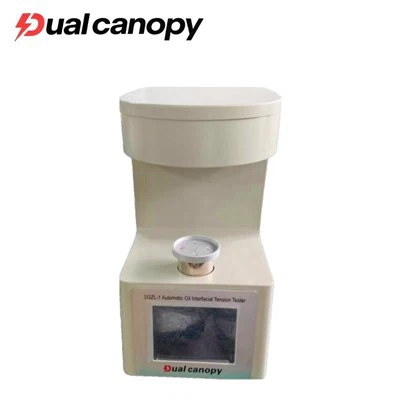Product Introduction
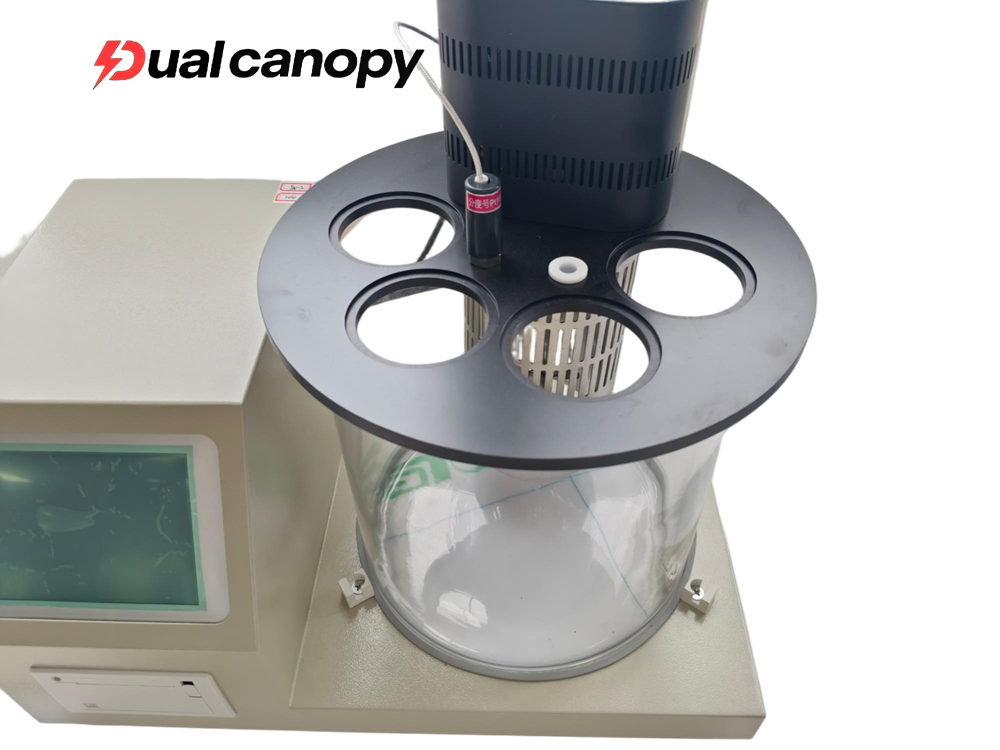
The kinematic viscosity tester is a specialized testing instrument designed in accordance with the national standard "GB265-88 Method for Measuring Kinematic Viscosity of Petroleum Products". It is mainly used for measuring the kinematic viscosity of liquid petroleum products (Newtonian liquids), with the measurement unit being m²/s. In practical use, mm²/s is often used as the representation. This instrument is compatible with domestic and international standards such as ASTM D445, and some models support the measurement of organic heat carriers and transparent/ opaque liquids. It is widely used in the fields of petroleum, chemical industry, power, and research.
The instrument is composed of a constant temperature system (including a bath, heating/cooling device), viscosity measurement stand, capillary viscometer, and data processing system for timing. The core parameters include a temperature control accuracy of ±0.01℃, a measurement range of 0.5 - 5000 mm²/s, equipped with an LCD Chinese display, touch buttons, and PID temperature control technology. The fully automatic model can achieve full-process automation of constant temperature, sample suction, timing, cleaning, and printing, and supports dual-hole asynchronous detection and data storage. The detection principle is based on measuring the flow time of the liquid in the calibrated capillary, combined with the viscosity meter constant to calculate the viscosity value.
1. LCD screen, Chinese character display, clear and understandable, simple operation.
2. The keyboard is used to set viscosity constant, control temperature value, fine-tune temperature value, number of tests, etc. parameters. The instrument has a memory function.
3. Adopting imported sensors and digital PID temperature control technology, with wide temperature control range and high temperature control accuracy.
4. Non-power-off date and time display, automatically shows the current time upon startup. 5. Network communication, remote control, and metering table optional functions.
6. Touch-sensitive buttons with good feel and long service life.
7. The number of experiments can be adjusted from 1 to 6, making it convenient for your experiments.
8. Experiment records can be saved, facilitating future viewing.
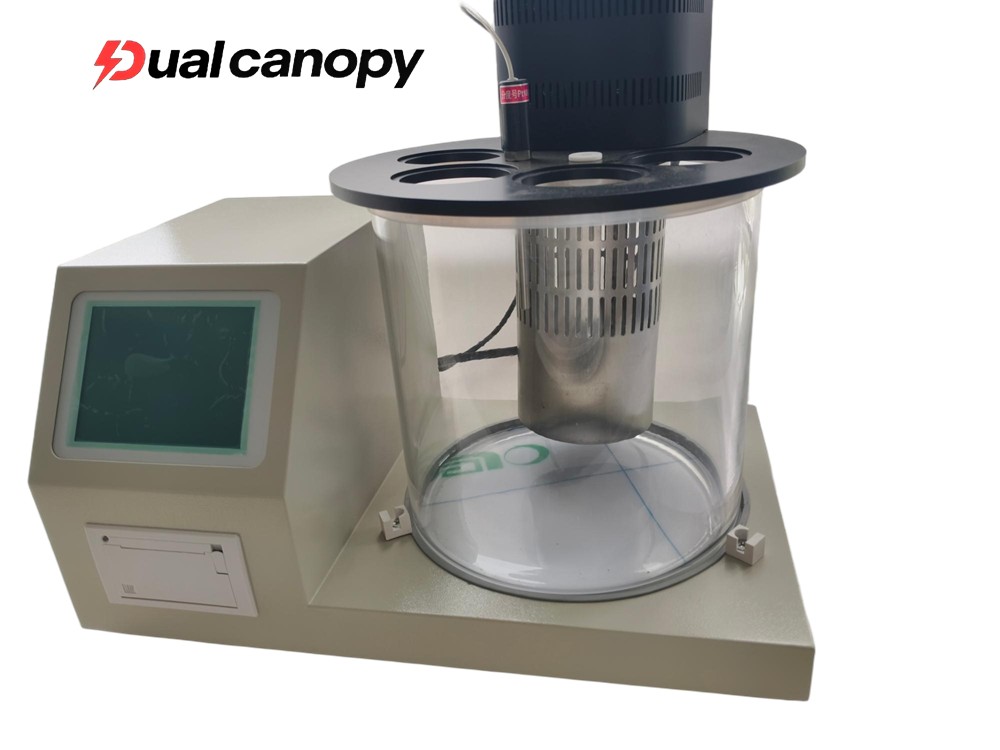
Product parameters
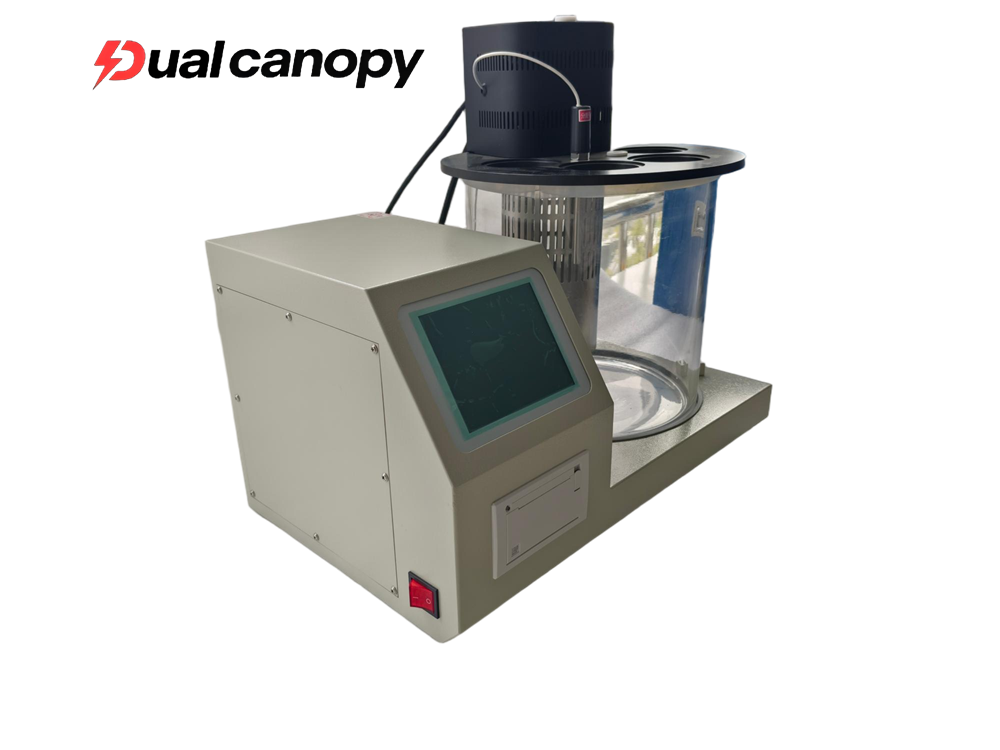
I. Overview
This instrument is a special test instrument designed and manufactured in accordance with the national standard "GB265-88 Petroleum Product Kinematic Viscosity Determination Method", which is suitable for determining the kinematic viscosity of liquid petroleum products. This instrument has the function of timing the sample movement time and automatically calculating the final result of the kinematic viscosity. This method is suitable for determining the kinematic viscosity of liquid petroleum products (referring to Newtonian liquids), and its unit is m2/s, which is usually used in practice as mm2/s. The dynamic viscosity can be obtained by multiplying the measured kinematic viscosity by the density of the liquid. This method is to measure the time for a certain volume of liquid to flow through a calibrated glass capillary viscometer under gravity at a constant temperature. The product of the capillary constant of the viscometer and the flow time is the kinematic viscosity of the liquid measured at that temperature. The product of the kinematic viscosity at that temperature and the density of the liquid at the same temperature is the dynamic viscosity at that temperature.
II. Main functions and features
1. The constant temperature bath adopts a small cylinder, which is easy to observe; the LCD screen, Chinese characters display, clear and easy to operate.
2. The keyboard sets the viscometer constant, control temperature value, fine-tuning temperature value, test number and other parameters. The instrument has a memory function and automatically saves the setting data after setting once.
3. Adopts high-performance microprocessor and digital PID temperature control technology, with wide temperature control range and high temperature control accuracy.
4. Calendar clock without power failure, automatically displays the current time when turned on.
5. Network communication, remote control and meter optional functions.
6. Experimental records can be saved, up to 255 can be stored, convenient for later viewing.
7. The number of experiments can be adjusted from 1 to 6 times, which is convenient for your experiment.
8. Built-in high-speed thermal micro printer, beautiful and fast printing, with offline printing function.
III. Technical indicators
1. Temperature control range: room temperature -120℃
2. Number of liquid bath holes: 4 holes
3. Temperature control accuracy: room temperature -120℃≤±0.1℃
Room temperature -40℃≤±0.2℃
4. Temperature control range: fully adjustable
5. Input power: AC220V±10V 50Hz
6. Heating power: 1000W
7. Speed: 0-4000r/min
IV. Use conditions
1. Ambient temperature: 0℃~40℃
2. Relative humidity: <80%
The factors influencing the measurement results of the viscometer for motion viscosity
Principle explanation: The viscosity of a liquid is closely related to temperature. When the temperature rises, the intermolecular forces between liquid molecules weaken, the internal friction decreases, and the kinematic viscosity reduces; when the temperature drops, the opposite occurs. Based on the temperature characteristics of liquid viscosity, it generally follows an exponential pattern of change. For example, for most lubricants, for every 10℃ increase in temperature, the viscosity may decrease to about half of the original value.
Example of influence: In the petrochemical industry, when measuring the kinematic viscosity of lubricating oil, if the temperature control is inaccurate, it may lead to significant deviations in the measurement results. Suppose the kinematic viscosity of a certain lubricating oil at 20℃ is 100mm²/s. When the temperature rises to 30℃, its kinematic viscosity may decrease to around 50mm²/s. Therefore, during the measurement process, it is necessary to ensure that the temperature of the constant temperature bath is precise and stable. Usually, the temperature control accuracy is required to be within ±0.01℃ - ±0.1℃.
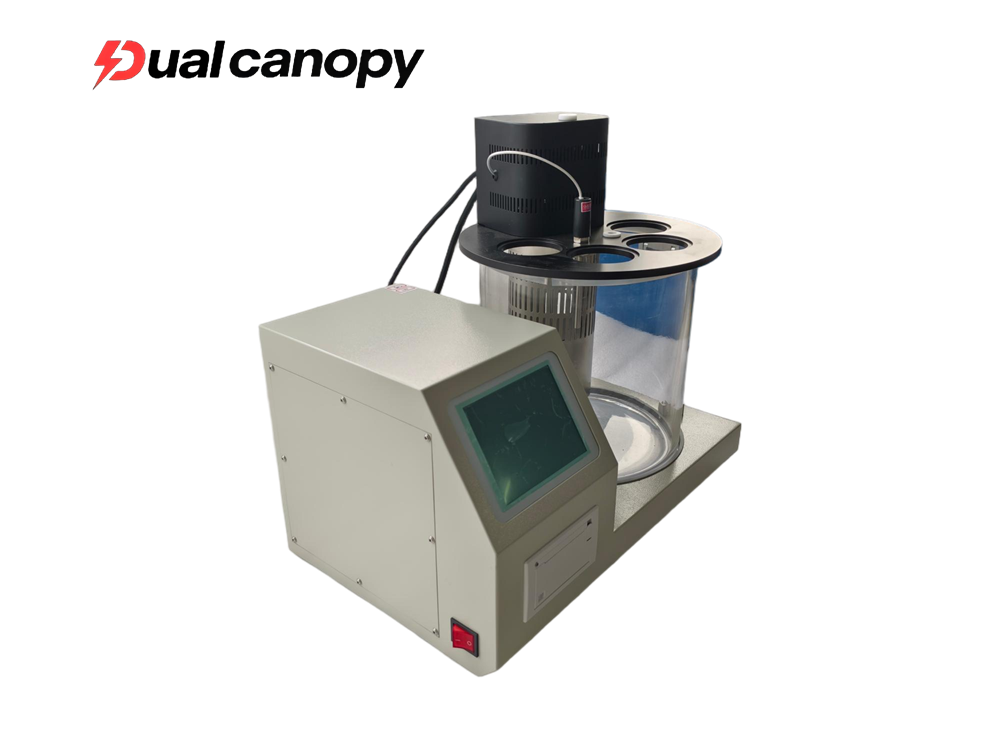
2. Sample purity factor
Principle explanation: If the sample contains impurities, bubbles or solid particles, it will interfere with the normal flow of the liquid, thereby affecting the measurement of kinematic viscosity. Impurities may alter the composition of the liquid and the interactions between molecules. Bubbles will occupy the space of the liquid and generate additional resistance during flow. Solid particles will increase the frictional force of the liquid flow.
Example of influence: In the pharmaceutical industry, when measuring the kinematic viscosity of biological agents, if the sample contains undissolved drug particles or tiny air bubbles, it will cause the measured kinematic viscosity to be higher than the actual value. For instance, when measuring a transparent protein solution, if it contains a small amount of insoluble protein aggregates, these aggregates will hinder the flow of the solution, resulting in an increased measured kinematic viscosity.
3. Measurement instrument factors
In terms of instrument accuracy
Principle explanation: The accuracy of the movement viscosity tester itself, such as the timing device, the dimensional accuracy of the capillary (for the capillary method), or the accuracy of the rotating components (for the rotational method), will have an impact on the measurement results. The accuracy of the timing device determines the accuracy of recording the time it takes for the liquid to flow through the capillary or the time it takes for the rotating components to rotate. Minor errors in the inner diameter and length of the capillary can lead to deviations in the calculated kinematic viscosity.
Example of influence: If the accuracy of the timing device is ±0.1s, when measuring a liquid with a low kinematic viscosity, since the time flowing through the capillary tube is relatively short, a relatively large relative error may occur. For example, the actual time for the liquid to flow through the capillary tube is 10s, and the timing error is ±0.1s, resulting in a relative error of ±1%; while when the flow time is 100s, the relative error decreases to ±0.1%. For the capillary tube, if the manufacturing error of its inner diameter is ±0.01mm, when measuring a high-viscosity liquid, according to the Hagen-Poiseuille law, it will also have a significant impact on the calculated result of kinematic viscosity.
Instrument cleaning aspect
Principle explanation: The cleanliness of the instrument's interior is also very important. If the internal parts of the capillary viscometer or the rotational viscometer still contain the sample or dirt from previous measurements, it will affect the flow characteristics and measurement accuracy of the new sample.
Example of an impact: In the food industry, after measuring a high-viscosity jam, if the instrument is not thoroughly cleaned before measuring the edible oil, the residual jam may cause the measured value of the kinematic viscosity of the edible oil to be higher, because the residual jam adds additional resistance.
4. Measurement methods and operational factors
In terms of method selection
Principle explanation: Different measurement methods (such as capillary method and rotational method) are suitable for different viscosity ranges and types of liquids. If the selected measurement method is not suitable for the viscosity characteristics of the sample, it will lead to inaccurate measurement results. For example, for liquids with low viscosity, using a rotational viscometer may be difficult to obtain accurate results due to the limitation of torque measurement accuracy; for high-viscosity non-Newtonian fluids, using the capillary method may not conform to its rheological characteristics.
In terms of operation standards
Principle explanation: During the operation process, factors such as the injection volume of the sample, the injection method, and the placement position during measurement also affect the measurement results. For example, when using a capillary viscometer, if the sample injection volume is inaccurate or there are air bubbles in the capillary, it will change the actual flow path and speed of the liquid.
Example of influence: During the measurement process, if the capillary viscometer is tilted, it will cause a change in the flow state of the liquid under the influence of gravity, resulting in a discrepancy between the measured kinematic viscosity and the actual value. Additionally, when using a rotational viscometer, an incorrect setting of the rotor speed can also affect the measurement results. If the rotor speed is too high, it may cause the liquid to experience turbulence, resulting in a measured viscosity that is lower than the actual value.
Hot Tags: kinematic viscosity tester, China kinematic viscosity tester manufacturers, suppliers, factory







